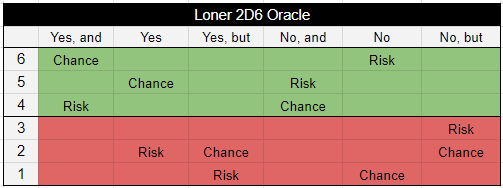There is a Twist counter. When any doubles are rolled, the answer is "Yes, but" and you add a mark to the counter. On your third mark you reset the counter and roll on the Twist Table. This is a 2D6 roll that forms a random sentence like, "[An object] [appears]" or "[An ally] [helps the hero]." You can either alter the current scene to match this plot twist or generate a random scene that has nothing to do with the current scene, but will definitely alter the overall story in some way.
I really like this idea a lot because it introduces a little bit of chaos and forces you to thing creatively about something you didn't expect to happen. It's also a nice tension builder when you're well into the story, but you have two marks and you start to worry about when that twist will happen.


